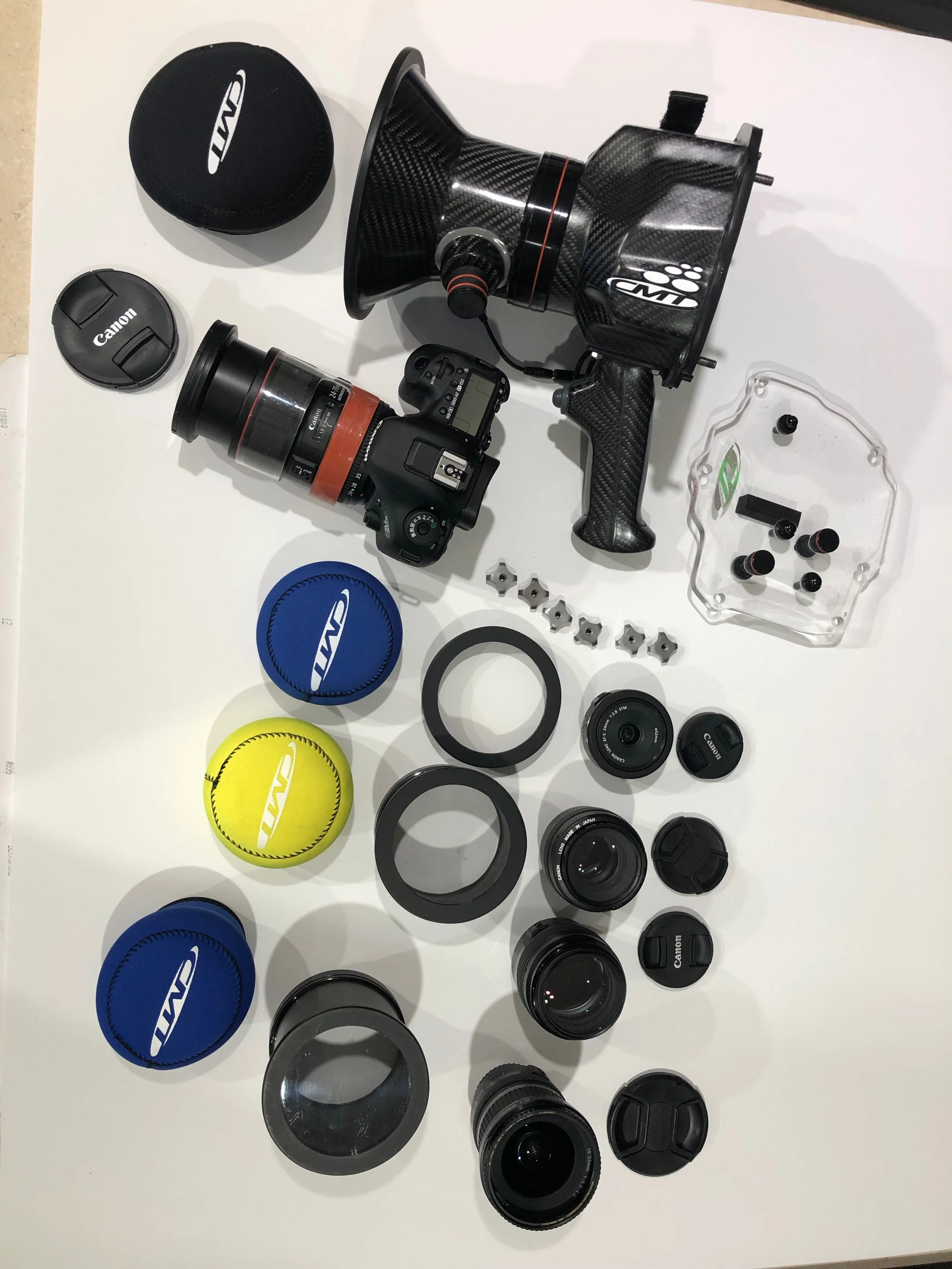I’ve been getting a lot of queries lately from others who want to do what I do. I would highly advise you do some research on YOUR OWN FIRST! I spent an incredible number of hours failing at what I do before I began to have even minimal success. What you need to do first is research on line every article you can on surf photography. After doing your homework and failing in the water, then it is time to ask the pros for assistance and tell them what you did and what went wrong. If you approach them before doing any work yourself that’s just totally wrong and disrespectful.
Camera settings are complicated and easy at the same time. It all depends on what you want to achieve. Some of the pros are totally manual and others utilize the cameras modes. I prefer shutter priority mode and use a shutter speed of 1/2000 to 1/3000. I normally shoot around f/8-f/11 most days and my ISO is usually 400, sometimes 300 depending on the light. AI SERVO is a must! One shot is for stills kids. You will have to experiment with the various focus settings on your camera but I tend to utilize the ones that focus on moving subjects in the frame.
Lenses: My go to lens is a 24-70mm f/2.8L II USM. Not for the faint of wallet but truly, if you want the great shots, you gotta get a good lens. Prime lenses work the best for sure. My 50mm f/1.4 and my 100mm f/2 are superb for what they are. The zoom lens lets me get close to the subject or a bit farther out but you still have to be close and it has a much better depth of field than my primes.
Ports: Flat or dome? I prefer the flat ports unless you have a fisheye lens or very wide angle lens, that’s where the domes come into play.
Water drops: Clarify works ok as does human spit every few minutes on the lens. I spit on it and rub it around and wait five minutes before hitting the water.
My current set up.
Safety Gear: Buy the best and it ain’t cheap! Gath Helmet! Totally needed. It’s not a matter of if you will get hit, rather, when. I’ve been surfing over 50 years and had lots of accidents. They happen. It’s hard enough to see other surfers on boards, it’s nearly impossible for them to see you in the water. You will need to know where they are going before they do and duck dive under them at the right time. Keep yer head on a swivel! You will also need to get an impact vest. Billabong makes some great ones as does Patagonia.
Fins: You totally need the right fins. If you have fat arthritic feet like me, you need some that will accommodate wet suit boots. The only ones that work for me are the FORCE FINS that have an open toe. I also have some DaFinn and some Tech II’s made of silicon for the summer.
Pre Check: Always lube up your O rings prior to entering the water, and check all of your equipment thoroughly. You can’t rush through this. One error could cost you thousands of dollars. Take your time. Make sure your settings are good, the seals are tight, the locking mechanisms secure and you are good to go. Nothing worse than getting into the water and looking through the view finder only to find that your lens cap is still on or you forgot to tighten one of the nuts on the back of the housing as water seeps in.
Before going into the water, always study the lineup. I spend about 30 minutes just watching and talking to surfers coming out about the current that day, the lineup, etc. I love to utilize the rip currents to take me out. I have tried using a boogie board to shoot from and it’s just a total pain. Just another thing to get in your way and get tangled up in. You will be using both hands to maintain the camera and the last thing you want is another object to deal with especially with surfers coming at you full speed. Swim! that’s the only way. Good luck out there and happy shooting!
Photo by Matt Haddaway.



